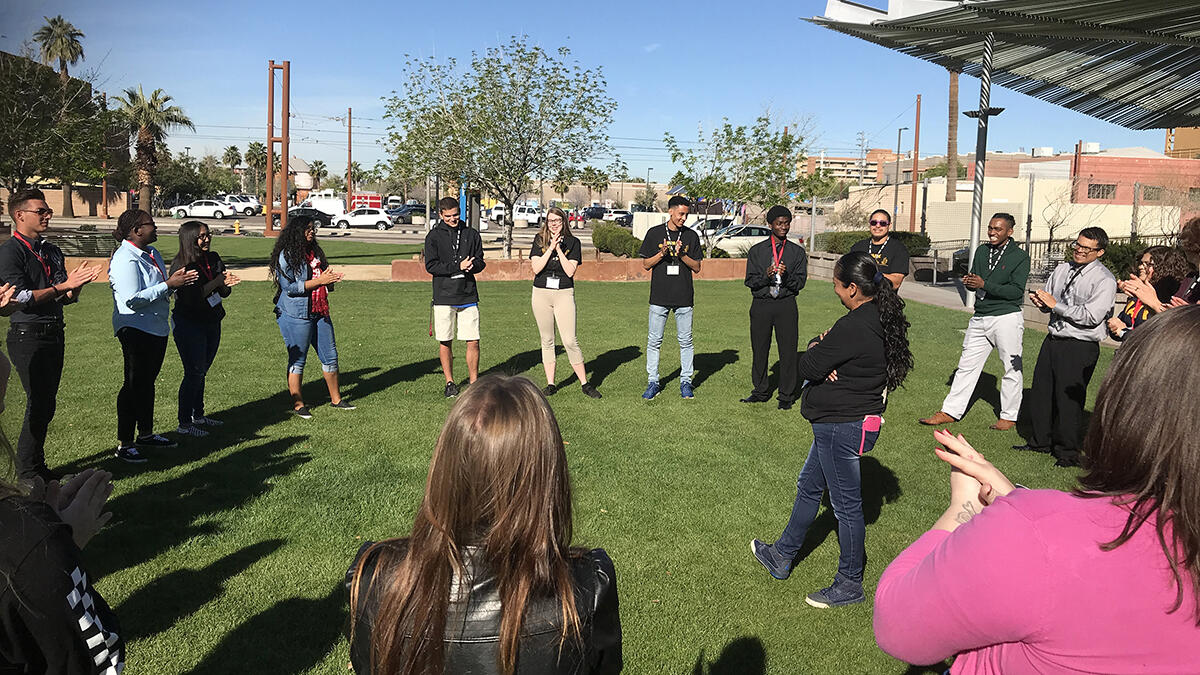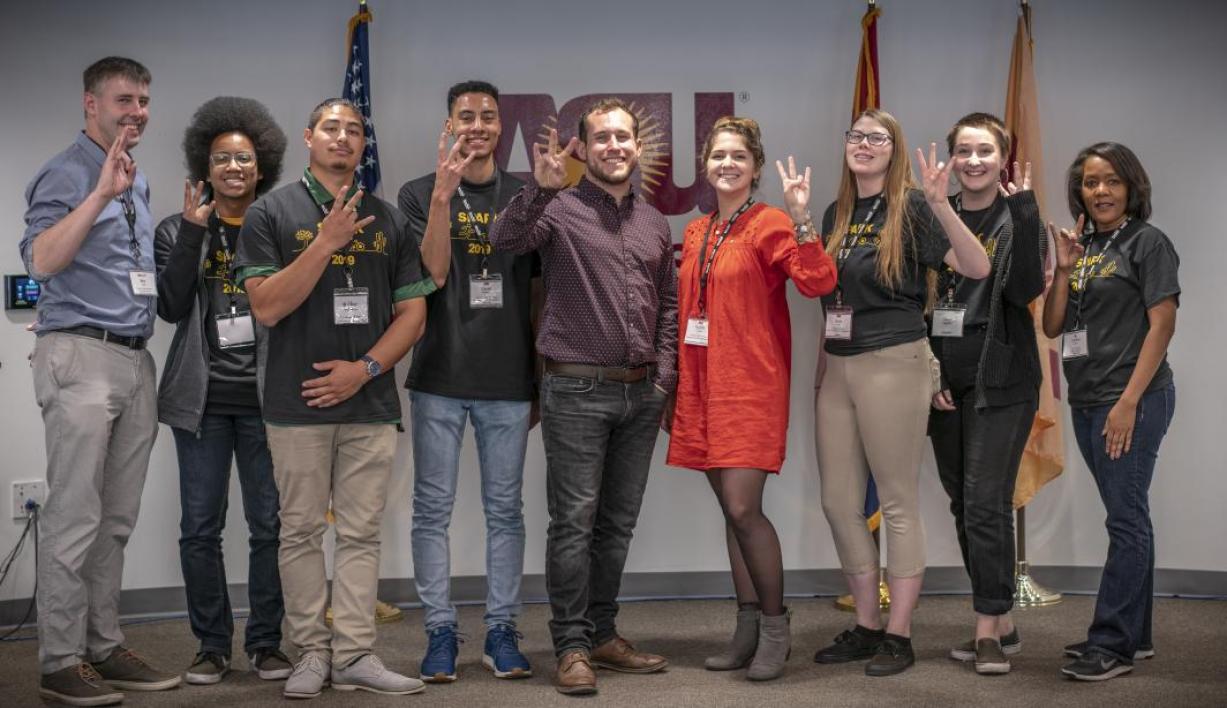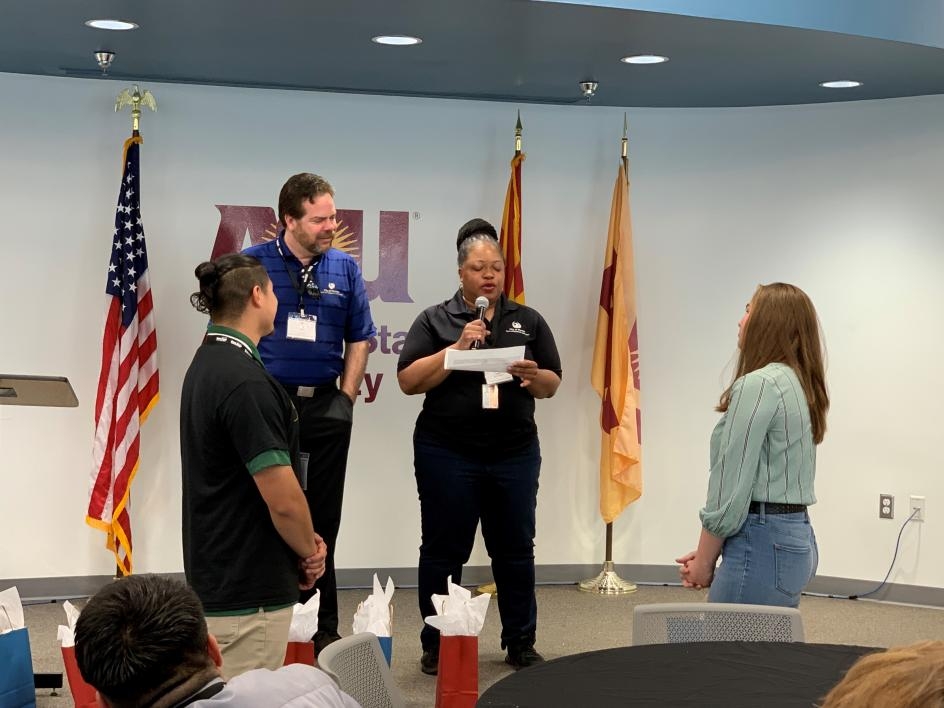Students, professionals in parks and recreation team up for co-learning experience

Parks and recreation professionals and students participate in an activity-based workshop.
College students, professionals and high school students came together to learn, network and tackle community problems at the third annual SPARK conference in March. The yearly event is coordinated by students within the Arizona State University School of Community Resources and Development with assistance from the Arizona Parks and Recreation Association and the Arizona State Therapeutic Recreation Association.
This year’s event theme, “It Takes a Village,” offered attendees a chance to learn how different professions have successfully worked together to build stronger communities and to apply their knowledge through case studies.
Eric Legg, assistant professor in the school, a unit of Watts College of Public Service and Community Solutions, said the event provides an opportunity for students to interact with professionals and see how what they learn in school can be applied outside the classroom walls. “One of our major goals is to give students a chance to network and be mentored by professionals,” he said.
The one-day event began with a networking breakfast, followed by a choice of team-building activities or a professional panel. Attendees then came together for the opening session, where the keynote speaker, John Sefton, community services director for the city of Peoria, talked about the importance of passion in pursuing one’s career.
Ryanne Mueller, the Parks and Recreation Student Association president, noted that, “John’s engagement with the audience set the tone for the whole day. He lit up the room and visibly sparked passion within the students and professionals.” Following his address, event organizers honored Sefton with the SPARK award for his ongoing inspiration and support of students.
Following the keynote, attendees participated in their choice of various 20-minute educational sessions. Each session highlighted how individuals from different professional backgrounds such as tourism, nonprofit management and communications work together to build stronger communities.
After a networking lunch, attendees broke out for the culminating activity: case studies based on actual situations faced by cities and towns across Arizona. Students were provided with two options for the case studies and in each they applied their learning alongside professionals in the field. In one session, students competed against each other to see who could come up with the best solution. Staff from the city of Phoenix helped facilitate and judge this competition based on a rubric that included how well the solution incorporated different professional approaches. Students who wanted a more collaborative environment could choose a second session where multiple groups worked together on the same problem to develop the ideal solution.
“The case studies were definitely the best part of the day," said Wilber Valencia, a community sport management major. "It was fun to work together to come up with solutions to these problems.”
Over 100 students and professionals attended this year’s event, including students from a local high school.
“The inclusion of high school students this year was great for all of us," said Krista VanderMolen, deputy director of the Arizona Parks and Recreation Association. "They were excited to be paired with a college counterpart and were fully engaged throughout the day.”
As any conference planner can attest, it is no easy task, but Legg summed up the payoffs of events like the SPARK conference: “The planning process can be exhausting, but at the end of the day, seeing high school students, college students and professionals networking and learning from each other makes it all worth it.”
Summary provided by Eric Legg

